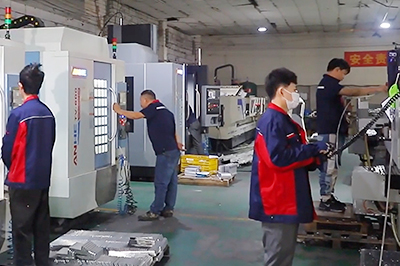Aluminum Casing Surface Treatment Technologies:
Enhancing Aesthetics and Performance in Modern Manufacturing
In the design and production of modern technological products, aluminum casings have gained widespread application due to their unique advantages. Surface treatment processes for aluminum casings serve as core technologies to further enhance their aesthetics, durability, and corrosion resistance, playing a pivotal role in shaping the overall quality of products.
Anodizing: The Foundation of Durability and Versatility
Anodizing stands out as one of the most common and critical surface treatment processes for aluminum casings. By placing aluminum alloy products in an electrolytic solution and applying an electric current, a hard, dense aluminum oxide layer forms on the surface. This oxide layer:
- Significantly improves hardness and wear resistance, enabling aluminum casings to withstand daily scratches and abrasion.
- Enhances corrosion resistance by isolating the aluminum alloy from moisture, oxygen, and corrosive elements.
The anodizing process also offers a wide range of color options—from classic silver and black to vibrant red, blue, and green hues. This versatility meets personalized aesthetic demands while ensuring durability. For example, high-end smartphones with anodized aluminum casings maintain their texture and color even after prolonged use.
Sandblasting: Creating Tactile Sophistication
Sandblasting introduces a unique matte or satin finish to aluminum casings by propelling high-speed sand particles at the surface. This technique:
- Conceals minor imperfections.
- Delivers an understated, industrial aesthetic ideal for minimalist designs.
- Improves anti-slip properties and stain resistance.
Professional photography equipment often uses sandblasted aluminum casings for their comfortable grip and professional appearance.
Brushing: Precision Texturing for Modern Appeal
Brushing (or linear brushing) etches straight, diagonal, or crosshatched lines onto aluminum alloy surfaces, creating a refined metallic sheen. Benefits include:
- Dynamic light-shadow effects under varying angles.
- Anti-fingerprint and anti-stain properties.
- Enhanced modern appeal for electronics like laptops and tablets.
Electroplating: Luxury and Enhanced Protection
Electroplating deposits metals like chromium or nickel onto aluminum casings, achieving:
- Mirror-like finishes (e.g., chrome-plated surfaces for automotive trim).
- Improved corrosion resistance.
- Elevated visual luxury and decorative versatility.
Strategic Integration for Competitive Excellence
Surface treatment technologies for aluminum casings—such as anodizing, sandblasting, brushing, and electroplating—enable manufacturers to tailor products to functional, environmental, and design requirements. By harmonizing aesthetics, durability, and corrosion resistance, aluminum alloy components stand out in competitive markets, captivating consumers with superior quality and visual appeal.
This holistic approach ensures aluminum casings not only meet technical demands but also drive brand differentiation in an increasingly design-driven world.

